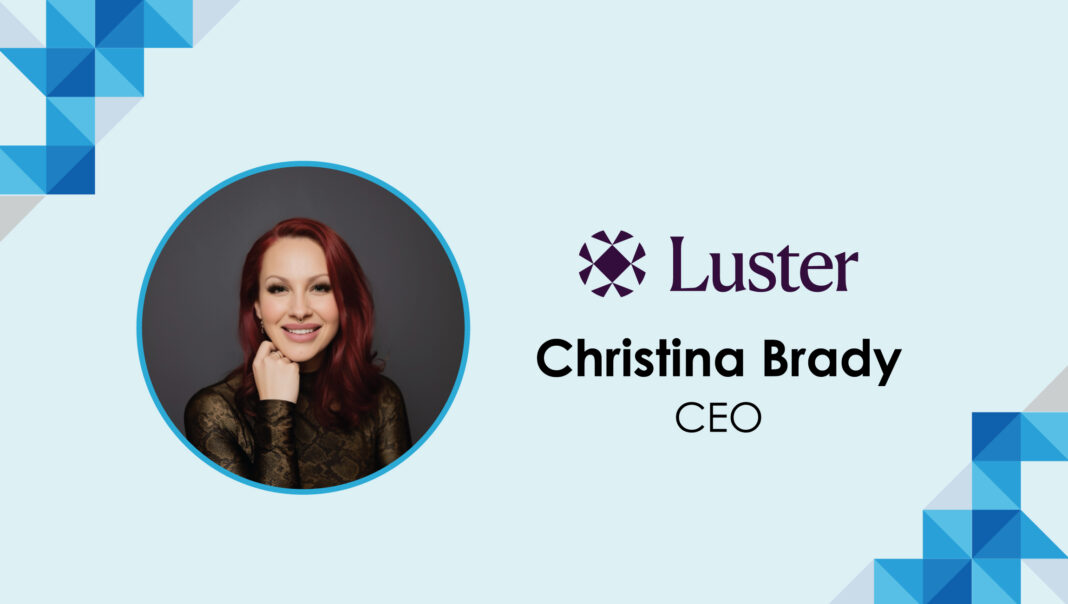Christina Brady, CEO of Luster AI talks about the unique features powering Luster AI’s capabilities while sharing a few thoughts on what it takes to optimize B2B tech sales training initiatives:
Hi Christina, tell us about your B2B SaaS journey and more about Luster AI: what differentiates the platform in the market?
Of course! My sales journey began in my early 20s. At the time, I had my sights set on becoming a comedian and one day being on a sitcom. Unfortunately, I had to overcome a series of hardships that would change the trajectory of my career, and to support myself, I entered the sales world. I first began by selling insurance and financial planning services, and during that job, I realized I really loved the job of sales but wasn’t very passionate about the product. From there, I began exploring other opportunities and ultimately landed at Groupon where my official start in SaaS sales began. At Groupon, I started out as an Account Executive and climbed the corporate ladder to become the Chief Strategy Officer. I went on to work as the Chief Strategy Officer at Sales Assembly, Head of Sales Growth at Glassdoor, among other roles, which ultimately led me to my current venture as the CEO and Co-Founder of Luster.
Luster is the first AI-powered Predicative Enablement™ technology for sales teams. Using our proprietary generative AI discourse engine, Luster offers a scalable alternative to traditional role-playing with AI-powered practice sessions that pinpoint and address skill gaps before they impact customer interactions. Sales reps can finally stop practicing on their customers, thanks to our tailored AI environments that simulate real sales stages, personas, and deal sizes, delivering a safe and engaging training experience. And, for the first time, GTM leaders can measure enablement ROI with precision, using Luster’s real-time data at both rep and team levels—something traditional methods can’t offer. No one else in the industry is doing what we’re doing, and that’s what differentiates us in the market.
What would you say are some of the biggest lags in current day sales training methodologies and how can AI be used more optimally to address this?
Preparedness. When you’re making a sales call, you don’t always know what sort of response you’re going to get on the other side. Even with research, you can’t guarantee that the conversation will go the way you’ve practiced in your head. But by using a product like Luster, you’re able to practice with hyper-realistic customer simulations that mirror the actual client you’re going to be talking to. We analyze these conversations in real-time and use that data to identify the specific skill gaps that may impact your interaction, then provide skill drills to help you improve these gaps, thus increasing your preparedness level. Essentially, our Predicative Enablement™ technology allows you to predict how a sales call will unravel, using real tangible data. That way, you’ll be able to practice for various circumstances that may happen with your customer or prospect that may actually happen, without going into the call completely blind or with minimal information.
Why should today’s Sales leaders pay more attention to AI powered sales training tools and look at implementing it as part of their salestech stack?
AI-powered sales training tools are the future. If your organization isn’t utilizing AI, you’re going to fall behind as your competitors propel forward. It’s about shifting with the times and utilizing the resources you have in front of you.
By using AI to your advantage, you’re better preparing yourself and increasing your productivity levels, which in turn increases revenue. As a 17-year sales veteran, I was constantly faced with the challenge of training and ensuring that training “stuck” and actually worked. Before Luster, that was impossible. But now, we can get right to the weaknesses of sales reps before they affect sales outcomes, and turning those weaknesses into strengths.
Can you highlight a little bit about how Sales leaders can take better initiatives to build more concrete sales training programs internally?
The first step is asking yourself, “what is a subjective observation of what needs to be trained?” vs. acknowledging an objective view. Both are helpful, but your subjective view takes into account your training and your perception of where the gaps are and what needs to be improved as a team and for each individual. The objective view comes into play when you have data that can identify downward trends, or identify what’s actually working, and do more of it. Next, you have to prioritize the needs, because as much as we’d like to, we can’t train everyone on everything all at once. In order to prioritize, you need to know:
- The impact of the issue: Is it a full team issue or a majority team issue, or only 1-2 individuals?
- The customer impact: Is the gap hurting revenue or impacting the customer? Or is it slowing down the process? Or is it simply “unideal”.
- You can’t do it alone: Utilize the help of Enablement, subject matter experts, and third party resources and tools to help close gaps, especially at the individual level.
If you had to share five quick thoughts on AI and the future of sales training: what would they be?
- AI can and should be used as a tool to help humans achieve optimum performance. For example, at Luster, AI is the treadmill that will allow you to train for the marathon, it won’t run it for you (nor should it).
- AI training and coaching can be an amazing supplement for reinforcement for traditional training and coaching.
- There are a lot of AI tools out there, prioritize the need to haves vs. the nice to haves to avoid distraction.
- AI that has predictive technology, such as Luster, will help you identify revenue deterioration before it happens.
- Don’t fear AI because you don’t understand it. Start small!

